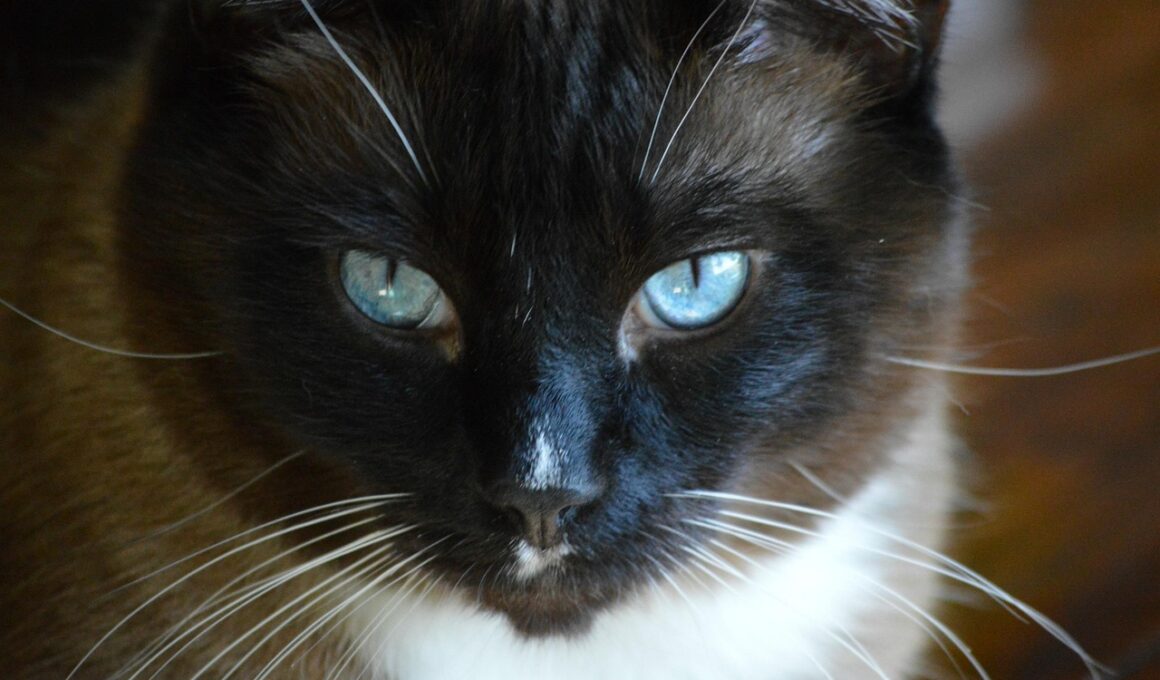Understanding Vocalizations of Snowshoe Cats
Snowshoe cats, known for their captivating appearance and unique vocalizations, play an essential role in enriching a home. Their sounds can vary widely, conveying different emotions and needs. Understanding these vocalizations is instrumental for cat owners who want to enhance their relationship with these feline companions. Unlike some breeds that might be quiet, Snowshoe cats are often talkative, with a range of chirps, trills, and meows that serve various purposes. Some vocalizations are reserved for communication with humans, while others are used to interact with fellow cats. For example, a high-pitched trill may indicate excitement or a desire for attention, while a deeper, rumbling meow can signal mild annoyance or displeasure. Recognizing these subtle nuances is vital for owners since different sounds can indicate different feelings. Snowshoe cats’ vocalizations can also change based on their experiences and environmental stimuli. Training or socialization may influence these vocal patterns too. In addition, various factors, such as age and mood, further shape their vocal behaviors, making it essential for owners to observe and adapt to their feline friends. Understanding these aspects fosters a better bond with your Snowshoe cat.
The Importance of Sound in Snowshoe Cats
Sound plays a significant role in the social dynamics of Snowshoe cats. These felines utilize vocalizations to establish rapport with their owners and fellow pets. The sounds made by Snowshoe cats not only reflect their mood but also help in conveying important needs and desires. They employ different pitches and tones, which can provide insights into how they are feeling. For instance, a Snowshoe may use a soft, gentle vocalization when seeking comfort or during playtime. Conversely, louder calls might indicate discomfort or a need for attention due to hunger or loneliness. The versatility in their vocal communication allows owners to interpret their needs effectively. Additionally, Snowshoe cats exhibit a form of learned vocalization, adapting their sounds based on interactions with humans. Within a household, these vocalizations can differ, creating a unique language tailored to their family. Through consistent interaction and observation, owners can respond effectively to their Snowshoe cats, thereby fostering deeper connections. As cats age, their vocalizations may evolve, often becoming more pronounced or varied, suggesting it is vital to remain attuned to the changing patterns over their lifetime.
Living with a Snowshoe cat offers various challenges and joys, especially concerning their vocalizations. For many owners, deciphering the sounds can create a fascinating experience. Snowshoe cats have an impressive range of vocal abilities, with unique personalities influencing their expressions. Their vocalizations can reflect various facets of their daily lives, from contentment during mealtime to anxiety during changes in the environment. Therefore, understanding these vocal cues allows pet owners to provide better care. Some owners often delight in conversing with their cats, engaging in playful exchanges that may revolve around their cat’s vocalizations. This interactivity ensures a stimulating environment, promoting not only a healthy bond but also mental enrichment for the Snowshoe. Furthermore, recognizing when vocalizations are linked to stress is equally vital. Some common stress-related vocalizations might include excessive meowing or yowling. Demonstrating patience and support during these times can help mitigate stress and promote a tranquil home atmosphere. Ultimately, the relationship between a Snowshoe cat’s vocal expression and its wellbeing exemplifies the importance of attentive and empathetic companionship.
Identifying Common Vocalizations
As cat owners, identifying the various vocalizations made by a Snowshoe is crucial for responding to their needs. Common sounds include purrs, meows, trills, and growls, each conveying specific messages. Purring generally indicates contentment, but it can also occur when a cat is anxious or unwell. Meows, on the other hand, serve as direct calls for attention, often demanding food or affection. Furthermore, the melodic trills accompanying playful behaviors often signal excitement and eagerness to interact. Observing the context in which these sounds are made can aid owners in understanding their Snowshoe better. For instance, during playtime, a series of soft trills may express joy. In contrast, a low growl typically indicates discomfort or a warning to back off. Engaging with your Snowshoe cat after recognizing this vocalization can help determine the root of any issues. Remembering to remain calm during these vocal exchanges is essential. Overall, identifying and understanding these common vocalizations significantly enhances communication and strengthens the bond between Snowshoe cats and their owners.
Being attentive to your Snowshoe’s vocal patterns can lead to improved comfort and happiness for both the cat and its owner. In responding effectively, you develop a routine that nurtures trust and stability. As they engage more vocally, your responsiveness can help build their confidence. For instance, if a Snowshoe continuously meows, and you consistently address its need, a sense of security develops between you. They learn that their communication is heard and valued, leading to a more harmonious relationship. Furthermore, assertive and loving responses help reduce unnecessary vocalizations linked to stress, which can occur when a cat feels unheard. Engaging with your Snowshoe through a series of playful exchanges, such as using interactive toys or treats, often encourages positive vocalizations, enhancing overall well-being. An enriched environment helps alleviate loneliness, ultimately reducing excessive meowing or distress sounds. The connection nurtured fosters collaboration and companionship, where both you and your Snowshoe feel understood and valued. As a result, the household atmosphere improves, allowing for peaceful coexistence. By prioritizing these interactions, you strengthen emotional bonds leading to a thriving relationship.
Training for Healthy Vocalization
Training techniques can significantly influence a Snowshoe cat’s vocalization habits. Establishing clear communication methods allows you and your Snowshoe to create a language of interaction based on understanding each other’s needs. Reinforcing positive vocalizations through praise or treats is vital in promoting healthy communication. When your Snowshoe expresses itself using preferred vocalizations, responding positively encourages more of the same over time. On the other hand, it’s equally important to avoid reinforcement of unwanted vocalizations, such as excessive crying or yowling. Instead, gently redirecting your cat’s attention toward positive activities can help refine their vocal expressions. Socialization is another crucial element of training that impacts vocalization. Encouraging interactions with other pets or people can lead to more dynamic vocal exchanges, enhancing their confidence. Engaging Snowshoe cats with various stimulating experiences helps curb any overwhelming sounds linked to boredom or anxiety. As owners, adapting training methods to accommodate the individual temperament of each Snowshoe will better reINFORCE confidence in their vocal abilities. In this way, the impact of training on vocalizations can lead to a more soothing home environment.
In conclusion, understanding the vocalizations of Snowshoe cats is a multifaceted endeavor that requires observation and responsiveness. Recognizing the array of vocal sounds distinguished by an individual cat, learning about their context is essential. The various noises range from playful trills to serious growls, emphasizing the importance of careful attention to how feelings are expressed. Building communication with your Snowshoe through vocal exchanges strengthens the bond within the home, reflecting social intricacies of feline companionship. Additionally, ensuring that the emotional needs of a Snowshoe are met involves recognizing the subtleties of their vocal expressions. When pet owners engage with their Snowshoe effectively, relationships flourish, promoting a tranquil environment where both parties thrive. Adequate training approaches support the cultivation of positive vocal habits, leading to enriching interaction experiences. Overall, building this mutual understanding not only elevates the quality of life for your Snowshoe but also enhances the joy of living with your furry friend. You can navigate the world of Snowshoe cats through a committed and observant partnership, where both vocalizations and experiences coalesce beautifully to form a tightly knit connection.


